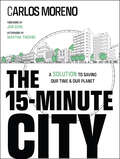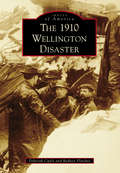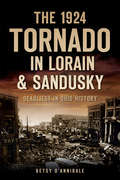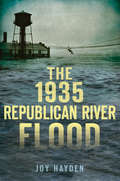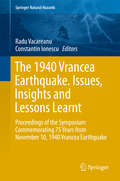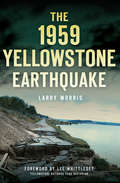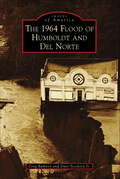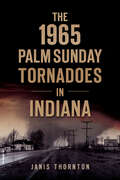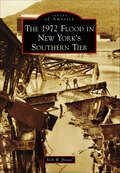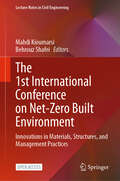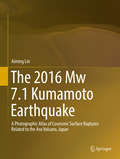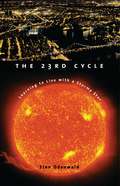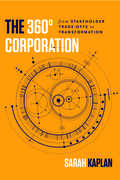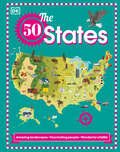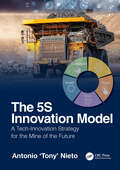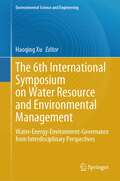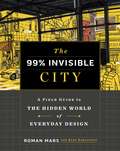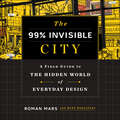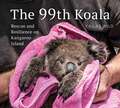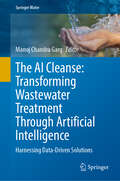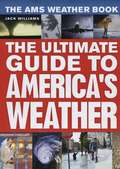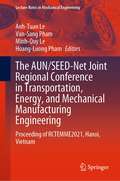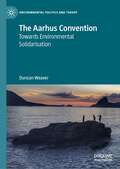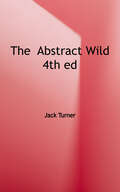- Table View
- List View
The 15-Minute City: A Solution to Saving Our Time and Our Planet
by Carlos MorenoA fresh and innovative perspective on urban issues and creating sustainable cities In The 15-Minute City: A Solution for Saving Our Time and Our Planet, human city pioneer and international scientific advisor Carlos Moreno delivers an exciting and insightful discussion of the deceptively simple and revolutionary idea that everyday destinations like schools, stores, and offices should only be a short walk or bike ride away from home. This book tells the story of an idea that spread from city to city, describing a new way of looking at living that addresses many of the most intractable challenges of our time. Hundreds of mayors worldwide have already embraced the concept as a way to help recover from the pandemic, and the idea continues to gain speed. You'll learn why more and more cities are planning to make cars far less necessary for contemporary city-dwellers and how they're planning to achieve that goal. You'll also find: Strategies for cities to recover and adapt to benefit residents, saving them precious time Techniques to change the habits of automobile-dependent city residents and maximize social benefits of living in a human-centric city Scientifically developed, research-backed solutions for enduring urban issues and problems Deeply committed to science, progress, and creativity, Moreno presents an essential and timely resource in The 15-Minute City, which will prove invaluable to anyone with an interest in modern and innovative approaches to consistently challenging urban issues that have bedeviled policy makers and city residents since the invention of the car.
The 1910 Wellington Disaster (Images of America)
by Deborah Cuyle Rodney FletcherThe town of Wellington was located by the Stevens Pass summit in the Cascade Mountains. During the last days of February in 1910, the snow was relentless in the Cascades, falling as much as one foot per hour and rising up to 20 feet deep in areas. Rotary plows could not keep the lines open as snow covered the railroad tracks almost immediately after being cleared. The Seattle Express, coming from Spokane, and a fast mail train were stranded just beyond the "safety" of the Cascade Tunnel, where they remained unmovable for almost a week under the snowpacked mountains. On March 1, an avalanche swept away the tracks and passengers aboard the two trains as well as several of Wellington's buildings and homes. Almost 100 individuals were killed in just a few seconds, creating America's deadliest avalanche and train disaster in history. Today, the site is part of the Iron Goat Trail off Highway 2, east of Skykomish. The snowshed, the abandoned original Cascade Tunnel, and various scraps of the trains left in the ravine are the only evidence that remain of Wellington, its long-forgotten inhabitants, or the disaster.
The 1924 Tornado in Lorain & Sandusky: Deadliest In Ohio History (Disaster)
by Betsy D'AnnibaleJune 28, 1924, dawned hot and sunny, with fluffy white clouds hovering over a blue and inviting Lake Erie. For two Ohio communities, Lorain and Sandusky, the day ended in unimaginable disaster. In the late afternoon, the blue sky turned dark, and the wispy white puffs morphed into a mass of black thunderclouds as a monster formed on the lake. An F4 tornado, unexpected and not understood, was born from a thunderstorm on the now turbulent waters of Lake Erie. It charged ashore, smashing into Sandusky, retreated again to the lake and then headed east before turning abruptly south to make landfall in Lorain. Before the massive funnel lifted, it would destroy a city, create death records still unbroken and change the lives of thousands of people.
The 1935 Republican River Flood (Disaster)
by Joy HaydenOn May 31, 1935, a storm system surged along the Republican River, bursting its banks in a matter of minutes with a roar that could be heard miles away. The greatest flood to hit the tri-state area of Colorado, Kansas and Nebraska, it left behind a landscape rearranged beyond recognition and claimed more than one hundred casualties. However, amid all the destruction and sorrow, amazing acts of heroism and unwavering courage were reported throughout the valley. Author Joy Hayden reveals the historic disaster and the steadfast resolve of those who witnessed it.
The 1940 Vrancea Earthquake. Issues, Insights and Lessons Learnt
by Radu Vacareanu Constantin IonescuThese proceedings include most of the available information on this major seismic event and its consequences. With an estimated moment magnitude of 7. 7 and a heavy toll in terms of human and economic losses, it ranks as the largest intermediate-depth earthquake in Europe in the twentieth century. Nevertheless, because of the difficult conditions in the 1940s, the lessons learnt after the Vrancea earthquake were not extensively shared with the international scientific community and thus, this book fills a gap in the literature discussing the knowledge acquired after major disasters. Past experience together with current understanding of the 1940 Vrancea earthquake are presented along with the latest information on Romanian seismicity, seismic hazard and risk assessment, and seismic evaluation and rehabilitation of buildings and structures. Moreover, it includes excerpts from Romanian post-disaster reports and textbooks concerning the earthquake.
The 1959 Yellowstone Earthquake (Disaster Ser.)
by Larry MorrisExperience the epic earthquake that shook up Yellowstone and the rescue effort that ensued.At 11:37 p.m. on August 17, 1959, a magnitude 7.5 earthquake rocked Montana's Yellowstone country. In an instant, an entire mountainside fractured and thundered down onto the sites of unsuspecting campers. The mammoth avalanche generated hurricane-force winds ahead of it that ripped clothing from backs and heaved tidal waves in both directions of the Madison River Canyon. More than two hundred vacationers trapped in the canyon feared the dam upstream would burst. As debris and flooding overwhelmed the river, injured victims frantically searched the darkness for friends and family. Acclaimed historian Larry Morris tells the gripping minute-by-minute saga of the survivors who endured the interminable night, the first responders who risked their lives and the families who waited days and weeks for word of their missing loved ones.
The 1964 Flood of Humboldt and Del Norte
by Greg Rumney Dave Stockton Jr.The 1964 flood in the Eel and Klamath Rivers drainages represents an extreme weather event. Both the Northern California and Southern Oregon coasts are host to many floods, but the 1964 flood stands out as a representation of the "perfect storm." Three events occurred that led to the flood. First, a cold front moved in and dropped several feet of snow. Second, a warm front called the "pineapple connection" moved in and released lots of rain while melting the snowfall--local measurements varied from 20 to 32 inches of rainwater in three days. And third, the highest tide of the year had backed up debris and water for several miles. At its peak, the Eel River was discharging more than 800,000 cubic feet per second. Another contributing factor was that besides being one of the fastest rising and falling rivers in the world, the Eel River has the heaviest sediment load second only to the Yellow River in China.
The 1965 Palm Sunday Tornadoes in Indiana (Disaster)
by Janis ThorntonAuthor Janis Thornton reveals the stories of a day in Indiana like no other.Palm Sunday 1965 started as the nicest day of the year, the kind of weather that encouraged Hoosiers to get out in the sun, fire up the grill, hit the golf course, or roll down their car windows and take a leisurely drive. That evening, however, throughout northern and central Indiana, the sky turned an ominous black, and storms moved in, quickly manifesting as Indiana's worst tornado outbreak. Within three hours, twisters, some a half-mile wide, ripped through seventeen counties, devastating communities and leaving death and destruction in their wake. When the tornadoes were finished with Indiana, 137 people were dead, hundreds were injured, and thousands more were forever changed.
The 1972 Flood in New York's Southern Tier (Images of America)
by Kirk W. HouseIn June 1972, Hurricane Agnes hit the East Coast with a monstrous and devastating force, bringing a deluge across multiple states and slamming four counties in the Southern Tier: Steuben, Chemung, Tioga, and Broome.Dozens died and property damage ran into the millions as Corning, Elmira, Owego, Binghamton, and other communities suddenly found themselves under water. The flood destroyed the Erie Lackawanna Railroad, staggered the Penn Central, shut down Corning Glass Works for weeks, and devastated the Corning Museum of Glass--a major cultural resource. Lives and landscapes were forever changed when homes and businesses washed away in a matter of minutes. Henceforth, the region's history became permanently divided into the times before and the times after the 1972 flood. Through stunning images, The 1972 Flood in New York's Southern Tier chronicles the extraordinary destruction of twisted rail lines, devastated streets, exhausted recovery workers, rivers bursting their banks, cars on houses, and houses on cars
The 1st International Conference on Net-Zero Built Environment: Innovations in Materials, Structures, and Management Practices (Lecture Notes in Civil Engineering #237)
by Mahdi Kioumarsi Behrouz ShafeiThis open access book provides the latest fundamental and practical advances in reducing the built environment’s carbon footprint based on a collection of papers presented at the 1st International Conference on Net-Zero Built Environment: Innovations in Materials, Structures, and Management Practices, held June 19-21, 2024, in Oslo, Norway. The volume presents research investigations and case studies spanning five interrelated domains: New materials and material preparation processes for zero (or negative) carbon footprint Robotic construction technologies for minimum formwork and on-site activities Novel structural designs and details for optimal performance with the least material usage Advanced condition assessment and health monitoring methods for the longest service life Innovative life-cycle analysis and policy-making strategies for effective civil infrastructure management
The 2016 Mw 7.1 Kumamoto Earthquake
by Aiming LinThis book shows the deformation characteristics of coseismic surface ruptures produced by the 2016 Kumamoto earthquake and the relationship between the Aso volcano and active faults. In particular, the rupturing mechanisms and processes involved in the seismogenic faults related to the crustal structure under the Aso volcano caldera are covered. The book is intended to help bridge the gaps between seismology, seismic disaster prevention, volcanology, seismotectonics, and geology and to encourage further studies of earthquake mechanisms and seismic faulting processes.
The 23rd Cycle: Learning to Live with a Stormy Star
by Sten OdenwaldOn March 13, 1989, the entire Quebec power grid collapsed, automatic garage doors in California suburbs began to open and close without apparent reason, and microchip production came to a halt in the Northeast; in space, communications satellites had to be manually repointed after flipping upside down, and pressure readings on hydrogen tank supplies on board the Space Shuttle Discovery peaked, causing NASA to consider aborting the mission. What was the cause of all these seemingly disparate events? Sten Odenwald gives convincing evidence of the mischievous—and potentially catastrophic—power of solar storms and the far-reaching effects of the coming "big one" brewing in the sun and estimated to culminate in the twenty-third cycle in the year 2001 and beyond. When the sun undergoes its cyclic "solar maximum," a time when fierce solar flares and storms erupt, fantastic auroras will be seen around the world. But the breathtaking spectacles will herald a potentially disastrous chain of events that merit greater preparation than Y2K. Is anyone listening?The 23rd Cycle traces the previously untold history of solar storms and the ways in which they were perceived by astronomers—and even occasionally covered up by satellite companies. Punctuated with an insert containing dramatic color images showing the erupting sun, the book also includes a history of the record of auroral sightings, accounts of communications blackouts from the twentieth century, a list of industries sensitive to solar storms, and information about radiation and health issues.
The 360° Corporation: From Stakeholder Trade-offs to Transformation
by Sarah KaplanCompanies are increasingly facing intense pressures to address stakeholder demands from every direction: consumers want socially responsible products; employees want meaningful work; investors now screen on environmental, social, and governance criteria; "clicktivists" create social media storms over company missteps. CEOs now realize that their companies must be social as well as commercial actors, but stakeholder pressures often create trade-offs with demands to deliver financial performance to shareholders. How can companies respond while avoiding simple "greenwashing" or "pinkwashing"? This book lays out a roadmap for organizational leaders who have hit the limits of the supposed win-win of shared value to explore how companies can cope with real trade-offs, innovating around them or even thriving within them. Suggesting that the shared-value mindset may actually get in the way of progress, bestselling author Sarah Kaplan shows in The 360° Corporation how trade-offs, rather than being confusing or problematic, can actually be the source of organizational resilience and transformation.
The 50 State Gems and Minerals: A Guidebook for Aspiring Geologists
by Yinan WangAn engaging kids' guide to the official US state gems and minerals by award-winning author Yinan Wan. How many states claim quartz as their official state gem? This guidebook answers this question and more as it explores the treasures that are designated official state gems and minerals. More than 150 photographs showcase these marvels, from the Star Blue quartz of Alabama to the jade nephrite of Wyoming. Each state entry is presented with details about the state gem and mineral, with pictures of each, and a map of the state showing where the gem or mineral can be found. Some states do not yet have designated gems or minerals, and suggestions and guidance are provided so that the reader can lead the way in getting one designated. Museums and parks with minerals are listed in the appendix so readers can go see specimens in person. Encyclopedic yet easy to read, this book is great for mineral and gem enthusiasts and future geologists of all ages.
The 50 States: Amazing landscapes. Fascinating people. Wonderful wildlife
by DKTake a tour through America and discover the 50 States that make up the USA!From north to south and coast to coast, America's 50 states await! Learn all about the natural wonders, man-made landmarks and incredible history that make each state unique with this fun-filled state-by-state guide. No plane ticket is needed! Inside the pages of this children&’s geography book, you&’ll discover: • Simple text that provides fun facts about America's 50 states. • Fun and dynamic layout and imagery that make learning enjoyable. • Colorful illustrations that are paired with amazing photography. • Engaging, age-appropriate text. • Cross-curriculum appeal: covers a range of topics, including geography, history and social studies. Welcome to the wild and wonderful United States of America! From Alabama and Arizona to Wyoming and Wisconsin, this travel activity book for kids is an engaging and educational guided tour of America. Did you know Californian surfers invented skateboarding, so they had something to do when there were no waves? And that Holiday World in Santa Claus, Ind., was the world's first theme park? Packed to the brim with fascinating facts and cool pictures, kids will be entertained and inspired by the beauty and diversity of &“the land of the free.&” The 50 States is the perfect educational book for kids ages 7-9 who want to learn more about the USA.
The 5S Innovation Model: A Tech-Innovation Strategy for the Mine of the Future
by Antonio 'Tony' NietoThis book is aimed to help us look into the future of mining by defining ultimate operational conditions that will be present in a typical mining operation regardless of how far in the future. It introduces an innovation strategy designed to identify current and future technologies to achieve specific ultimate operational conditions that will be present in ‘the mine of the future’. The mining innovation strategy presented here is the result of several innovation projects where the author had the opportunity to assist and had successfully implemented it at several mining companies and mining research institutions around the world, including Australia, South Africa, the United States, Canada, Peru, and Mexico. This innovation strategy is designed to be consistent with any type of mining method as well as any commodity being mined, such as metal or nonmetal mining, soft-rock or hard-rock mining, underground or surface mining. The five ultimate mining operational conditions or drivers discussed in this book were carefully defined considering current operational and technology trends, which will keep any mining company competitive during the following decades. The mining innovation strategy thus considers five ultimate operational conditions or drivers (1) Achieving maximum safety, (2) simplifying systems, (3) using smart-intelligent systems, (4) designing stealth operations,and (5) sustainable use of environmental and human resources within the operation. These five innovation drivers are common denominators to any mining method, regardless of their operational nature or commodity being mined either today or in the future. It is thus envisaged that the mining innovation model introduced in this book can serve as an initial guideline for the mining industry to better identify current and future technologies that need to be addressed today.
The 6th International Symposium on Water Resource and Environmental Management: Water-Energy-Environment-Governance from Interdisciplinary Perspectives (Environmental Science and Engineering)
by Haoqing XuThis book is designed to be the introductory work in the Water-Energy-Environment-Governance from Interdisciplinary Perspectives Series and provides an in-depth look at sustainable development and management in the water sector across. The water-energy-environment nexus (WEEN) represents important interstate connections of water, energy, and the environment. Present day water and energy systems are interdependent. Water is used in all phases of energy production and electricity generation. Energy is required to extract, convey, and deliver water of appropriate quality for diverse human uses and then again to treat waste waters prior to their return to the environment. Security in water, energy, and the environment is associated with human, economic, and environmental sustainability. This interweaving is strengthening under aggregating natural resource scarcity and climate change. This book includes selected papers from the 6th International Symposium on Water Resource and EnvironmentalManagement (WREM 2023) and consists of themes pertaining to water resource and environmental management. It provides readers with comprehensive information, and formulation of solutions leading to a set of Water-Energy-Environment-Governance from Interdisciplinary Perspectives through our forum and the publication of your research. As a reference, it is of interest to students, scientists, engineers, government officials, and water resource managers.
The 99% Invisible City: A Field Guide to the Hidden World of Everyday Design
by Roman Mars Kurt Kohlstedt 99% Invisible__________Out now: The most entertaining and fascinating book about architecture and design, from the wildly popular podcast 99% Invisible. __________A New York Times Bestseller'Full of surprises and quirky information . . . a fascinating journey through the over-familiar.' - Financial Times, Best Books of 2020'[A] diverse and enlightening book . . . The 99% Invisible City is altogether fresh and imaginative when it comes to thinking about urban spaces.' -The New York Times Book Review'A delightful book about the under-appreciated wonders of good design' - Tim Harford, bestselling author of The Undercover Economist and Fifty Things that Made the Modern Economy'99% Invisible goes deep on the design and architecture we tend to overlook - this is it in glorious guidebook form . . . fascinating.' Wired__________This is 99% Invisible. __________A beautifully designed guidebook to the unnoticed yet essential elements of our cities, from the creators of the wildly popular 99% Invisible podcast Have you ever wondered what those bright, squiggly graffiti marks on the sidewalk mean?Or stopped to ponder who gets to name the streets we walk along?Or what the story is behind those dancing inflatable figures in car dealerships?99% Invisible is a big-ideas podcast about small-seeming things, revealing stories baked into the buildings we inhabit, the streets we drive, and the sidewalks we traverse. The show celebrates design and architecture in all of its functional glory and accidental absurdity, with intriguing tales of both designers and the people impacted by their designs.Now, in The 99% Invisible City: A Field Guide to Hidden World of Everyday Design, host Roman Mars and coauthor Kurt Kohlstedt zoom in on the various elements that make our cities work, exploring the origins and other fascinating stories behind everything from power grids and fire escapes to drinking fountains and street signs. With deeply researched entries and beautiful line drawings throughout, The 99% Invisible City will captivate devoted fans of the show and anyone curious about design, urban environments, and the unsung marvels of the world around them.__________You are about to see stories everywhere, you beautiful nerd. Now get out there.'If you've ever wondered why our world is the way it is, this show has your answers' The Hustle'99% Invisible...is completely wonderful and entertaining and beautifully produced...' Ira Glass, This American Life'The hugely inventive 99% Invisible treats the design of everyday things like a forensic science.' WIRED
The 99% Invisible City: A Field Guide to the Hidden World of Everyday Design
by Roman Mars Kurt Kohlstedt 99% InvisibleAn entertaining guide to the unnoticed yet essential elements of our cities, featuring new and exclusive material from the creators of the wildly popular 99% Invisible podcast. Have you ever wondered what those bright, squiggly graffiti marks on the sidewalk mean?Or stopped to ponder who gets to name the streets we walk along?Or what the story is behind those dancing inflatable figures in car dealerships?99% Invisible is a big-ideas podcast about small-seeming things, revealing stories baked into the buildings we inhabit, the streets we drive, and the sidewalks we traverse. The show celebrates design and architecture in all of its functional glory and accidental absurdity, with intriguing tales of both designers and the people impacted by their designs.Now, in The 99% Invisible City: A Field Guide to Hidden World of Everyday Design, host Roman Mars and coauthor Kurt Kohlstedt zoom in on the various elements that make our cities work, exploring the origins and other fascinating stories behind everything from power grids and fire escapes to drinking fountains and street signs. With deeply researched entries and beautiful line drawings throughout, The 99% Invisible City will captivate devoted fans of the show and anyone curious about design, urban environments, and the unsung marvels of the world around them.__________You are about to see stories everywhere, you beautiful nerd. Now get out there.(P)2020 Houghton Mifflin Harcourt
The 99th Koala: Rescue and resilience on Kangaroo Island
by Kailas WildIn last summer&’s devastating fires, Kangaroo Island lost half of its koala population, with many more left injured and starving. This is the inspiring and sometimes confronting story of someone who went to help and ended up a koala dad. When Kailas Wild – arborist by trade and conservationist at heart – heard that there were injured koalas on Kangaroo Island who could only be reached by a tree climber, he drove 1500 kms to volunteer. Seven weeks later, he had crowd-funded sixty-five thousand dollars, participated in the rescue of over 100 koalas and had formed a special bond with a baby koala – Joey Kai. His social media postings gained tens of thousands of views and press attention around Australia and overseas, including the BBC, The Times (London), The New York Times and The Daily Mail. The 99th Koala shares that experience, in words and pictures, and introduces us to some of the koalas of Kangaroo Island. Sometimes tragic, sometimes hopeful, Kai&’s story above all commemorates our unique wildlife, and demonstrates the power of one person trying to make a difference. &‘At a time when many people have felt helpless to act against the immensity of the fires or the threat of climate change, Kai's daily descriptions and videos of saving helpless animals have been a welcome dose of personal courage and deep humanity.&’ ABC
The AI Cleanse: Harnessing Data-Driven Solutions (Springer Water)
by Manoj Chandra GargThis groundbreaking book goes beyond conventional approaches and explores how AI is revolutionizing the field of wastewater treatment, offering innovative solutions to pressing challenges. "The AI Cleanse" takes you on a captivating journey through the convergence of AI and wastewater treatment, revealing the potential for enhanced efficiency, effectiveness, and sustainability. From optimizing treatment processes to intelligent monitoring and fault detection, this book showcases how AI-driven technologies can reshape the way we approach wastewater treatment.Gain a comprehensive understanding of the basics of wastewater treatment and the limitations of traditional methods. Explore the practical applications of AI, such as data acquisition and analysis, process optimization, and resource recovery. Learn about cutting-edge technologies, emerging trends, and future directions in the field.Written in a reader-friendly style, "The AI Cleanse" bridges the gap between theoretical knowledge and practical implementation. Packed with real-world examples, case studies, and insights from experts in the field, this book equips researchers, professionals, and students with the knowledge needed to harness the full potential of AI in wastewater treatment.If you are passionate about environmental preservation, sustainable practices, and the power of technology, "The AI Cleanse" is your guide to unlocking the transformative potential of artificial intelligence in wastewater treatment. Embrace a cleaner future and be at the forefront of this revolution in the field.
The AMS Weather Book: The Ultimate Guide to America's Weather
by Jack Williams Stephanie Abrams Rick Anthes Jim CantoreAmerica has some of the most varied and dynamic weather in the world. Every year, the Gulf Coast is battered by hurricanes, the Great Plains are ravaged by tornados, the Midwest is pummeled by blizzards, and the temperature in the Southwest reaches a sweltering 120 degrees. Extreme weather can be a matter of life and death, but even when it is pleasant--72 degrees and sunny--weather is still central to the lives of all Americans. Indeed, it's hard to imagine a topic of greater collective interest. Whether we want to know if we should close the storm shutters or just carry an umbrella to work, we turn to forecasts. But few of us really understand the science behind them. All that changes with The AMS Weather Book. The most comprehensive and up-to-date guide to our weather and our atmosphere, it is the ultimate resource for anyone who wants to understand how hurricanes form, why tornados twirl, or even why the sky is cerulean blue. Written by esteemed science journalist and former USA Today weather editor Jack Williams, The AMS Weather Book, copublished with the American Meteorological Society, covers everything from daily weather patterns, air pollution, and global warming to the stories of people coping with severe weather and those who devote their lives to understanding the atmosphere, oceans, and climate. Words alone, of course, are not adequate to explain many meteorological concepts, so The AMS Weather Book is filled with engaging full-color graphics that explain such concepts as why winds blow in a particular direction, how Doppler weather radar works, what happens inside hurricanes, how clouds create wind and snow, and what's really affecting the earth's climate. For Weather Channel junkies, amateur meteorologists, and storm chasers alike, The AMS Weather Book is an invaluable tool for anyone who wants to better understand how weather works and how it affects our lives.
The AUN/SEED-Net Joint Regional Conference in Transportation, Energy, and Mechanical Manufacturing Engineering: Proceeding of RCTEMME2021, Hanoi, Vietnam (Lecture Notes in Mechanical Engineering)
by Anh-Tuan Le Van-Sang Pham Minh-Quy Le Hoang-Luong PhamThis book (The AUN/SEED-Net Joint Regional Conference in Transportation, Energy, and Mechanical Manufacturing Engineering) gathers selected papers submitted to the 14th Regional Conference in Energy Engineering and the 13th Regional Conference in Mechanical Manufacturing Engineering in the fields related to intelligent equipment, automotive engineering, mechanical systems and sustainable manufacturing, renewable energy, heat and mass transfer. Under the theme of “Integration and Innovation for Sustainable Development,” This book consists of papers in the aforementioned fields presented by researchers and scientists from universities, research institutes, and industry showcasing their latest findings and discussions with an emphasis on innovations and developments in embracing the new norm, resulting from the COVID-19 pandemic.
The Aarhus Convention: Towards Environmental Solidarisation (Environmental Politics and Theory)
by Duncan WeaverThe Aarhus Convention on access to information, public participation in decision-making and access to justice in environmental matters has been celebrated as a pioneering international environmental agreement. Given that a quarter-century has passed since Aarhus was opened for signature, now is an opportune moment to revisit it from a fresh perspective. Marking this anniversary, this book explores Aarhus from the vista of the English School of International Relations, an ethically-minded perspective used to gauge the prevalence of state-oriented and human-oriented progress from the Convention's rationales and realities. It firstly considers Aarhus' propagation, investigating the legal, diplomatic and geopolitical contexts enabling its emergence. It secondly investigates Aarhus' germination, with reference to its trinity of procedural rights. Thirdly, the book examines the Convention's growth, in terms of the development of its organisational infrastructure. The chief finding is that Aarhus demonstrates, in environmental contexts, the feasibility and benefit of fostering 'humankind' solidarist progress, rooted in moral cosmopolitanism, within the existing power arrangements of a sovereignty-based pluralism. Pluralist concerns for diversity and international order are found to be a precondition for more ethically ambitious solidarist endeavours. These observations reinforce the logic of solidarisation, an English School innovation that presents sovereignty as (a) being ethically matured by solidarism whilst (b) delimiting solidarism within the threshold of states' tolerance.
The Abstract Wild
by Jack TurnerIf anything is endangered in America it is our experience of wild nature—gross contact. There is knowledge only the wild can give us, knowledge specific to it, knowledge specific to the experience of it. These are its gifts to us. <p><p>How wild is wilderness and how wild are our experiences in it, asks Jack Turner in the pages of The Abstract Wild. His answer: not very wild. National parks and even so-called wilderness areas fall far short of offering the primal, mystic connection possible in wild places. And this is so, Turner avows, because any managed land, never mind what it's called, ceases to be wild. Moreover, what little wildness we have left is fast being destroyed by the very systems designed to preserve it. <p><p>Natural resource managers, conservation biologists, environmental economists, park rangers, zoo directors, and environmental activists: Turner's new book takes aim at these and all others who labor in the name of preservation. He argues for a new conservation ethic that focuses less on preserving things and more on preserving process and "leaving things be." He takes off after zoos and wilderness tourism with a vengeance, and he cautions us to resist language that calls a tree "a resource" and wilderness "a management unit." <p><p>Eloquent and fast-paced, The Abstract Wild takes a long view to ask whether ecosystem management isn't "a bit of a sham" and the control of grizzlies and wolves "at best a travesty." Next, the author might bring his readers up-close for a look at pelicans, mountain lions, or Shamu the whale. From whatever angle, Turner stirs into his arguments the words of dozens of other American writers including Thoreau, Hemingway, Faulkner, and environmentalist Doug Peacock. We hunger for a kind of experience deep enough to change our selves, our form of life, writes Turner. Readers who take his words to heart will find, if not their selves, their perspectives on the natural world recast in ways that are hard to ignore and harder to forget.
